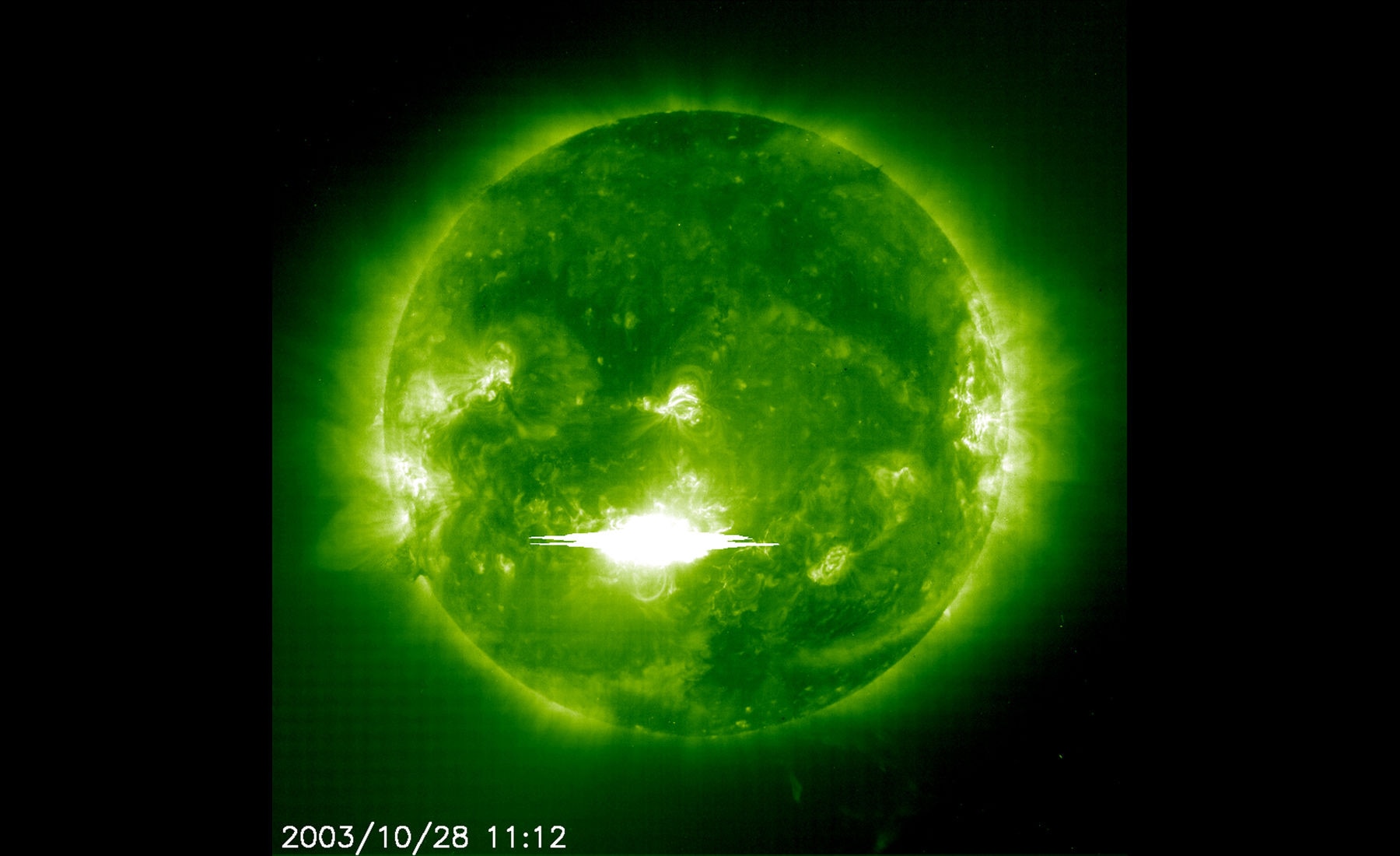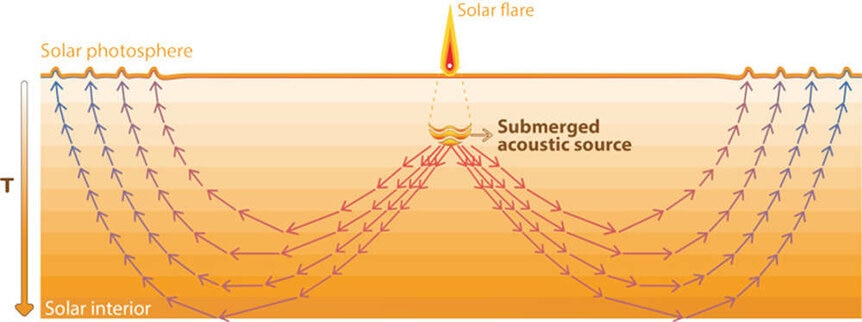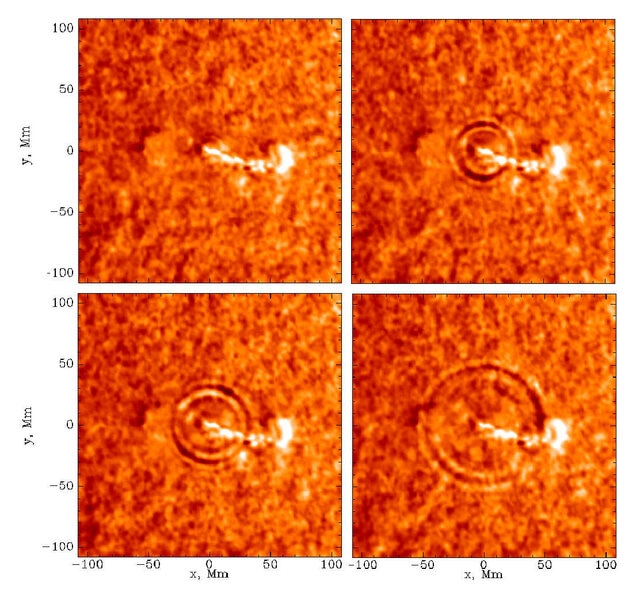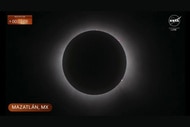Create a free profile to get unlimited access to exclusive videos, sweepstakes, and more!
Solar flares cause massive ripples in and under the Sun's surface

Solar flares are among the most terrifying events in the solar system. These are colossal explosions of energy, the biggest of which can blast out as much as 10% of the Sun's total energy — the equivalent of detonating billions of one-megaton nuclear bombs.
They do more than simply explode on soul-crushing scales. They also send out high-energy gamma rays and a wave of subatomic particles that can damage satellites and partially ionize the Earth's atmosphere, causing telecommunications issues and even power outages.
These are a serious threat to our space-faring and technology-based civilization. Predicting them is difficult, so the more we understand them the better.
In the 1990s it was found that besides sending energy into space, they also produce a tremendous pulse of energy downward, into the Sun. This can get converted to acoustic waves, literally sound waves that travel through the Sun's upper layer, and these can be seen as circular ripples in the Sun's surface moving outward, away from the flare.
How this works exactly, though, has been a mystery for two decades. New observations, though, have revealed a surprise: The source of these waves can actually come from deep inside the Sun, as much as 1000 kilometers beneath the flare, and not necessarily from the base of the flare itself on the surface.
The scientists used observations from the Solar Dynamics Observatory's Helioseismic and Magnetic Imager (HMI), an instrument on the spacecraft that measures the magnetic field on the Sun's surface, which in turn allows them to map the motions of the plasma (ionized gas) on the surface. They looked at a flare that occurred on 30 July 2011, a rather weak M9.3 flare that nevertheless drove acoustic waves through the Sun.
The scientists used the measurements from HMI to reverse-engineer where the waves came from, creating a 3D map of what's happening under the surface. What they found is that the ripples from the flare didn't come from the surface, but instead had a source located deep under it, a thousand kilometers down.
What likely happened is that some of that burst of energy from the flare traveled downward and triggered some second source of energy, and it's that which created the ripples.
So what is that second source? It's not clear.
One idea has to do with energy transport in the Sun. Deep (this time, hundreds of thousands of kilometers down) under the surface, the plasma is extremely hot. It becomes buoyant, and rises, just like hot air rises. Embedded in this plasma, though, are complex magnetic fields. When the blob of hot plasma gets near the Sun's surface, those magnetic field lines interact with others around them, getting tangled. The blob cools when it gets to the surface, but the tangled lines prevent it from sinking back down. We see this as a sunspot, a darker region on the surface since the gas is cooler.
Underneath it, though, the plasma is still rising, blocked by the cooler stuff above it. This makes that volume of gas under the spot unstable. It has a lot of energy in it, and a flare above it might trigger the release of some of that energy, creating the ripples.
Another idea is that magnetic field at the surface redirects some of that flare energy downward, focusing it into one spot, where it is suddenly released. It's not clear that they can direct it that far downwards, though.
So the exact mechanism is a mystery. But, the fact that a secondary source is triggered at all is new, and another piece of the puzzle of how flares work. Perhaps by understanding this mechanism better the conditions needed for it can be seen earlier — like mapping a storm that might produce a tornado — so astronomers can be on the alert.
Space weather (the waves of energy and subatomic particles the Sun emits) is an important part of understanding the Sun itself, and critically how it can affect us.
I'll remind you that in 2012 the Sun released an epic storm that, had it been aimed at Earth, would've been catastrophic. Happily, it missed us. But a new solar cycle is upon us, and over the next seven to eight years or so the magnetic activity, including flares and other explosions, will be on the rise. You can bet solar astronomers will have their eyes on the Sun during this time. Perhaps soon they'll be able to go from reacting to predicting.















